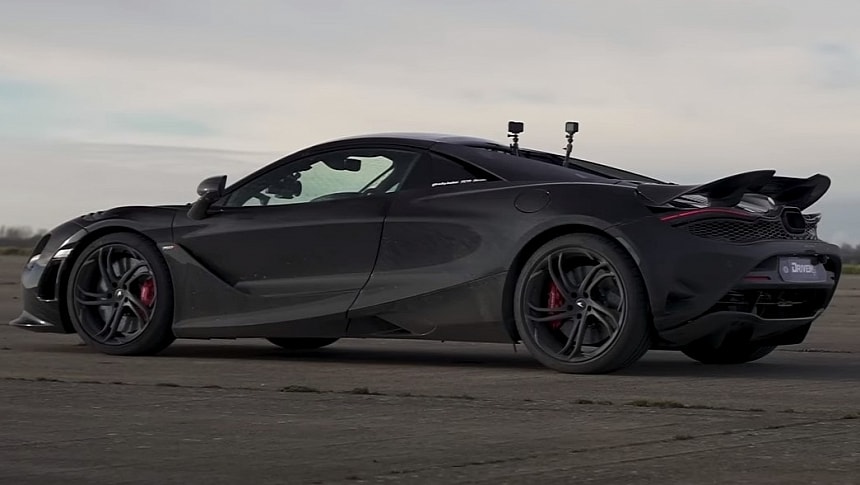Winter is almost over. And you know what that means! Racing season is upon us! The first meet of the year is just around the corner. And I'll attend my first track day in the RX-7 in either March or April.
But I've also considered a new challenge for 2024. With all these drag racing videos online, I've gotten an appetite for 1/4-mile (402 meters) racing. Our trek to last year's international racing event also helped. I'll be happy if the TurboII can complete a run in less than 14 seconds. But I'm curious to see if Mike's FD can do it in less than 12. Racing in a straight line might be easier than going around the racetrack.
But we shouldn't take it lightly either. And today's video further supports that statement. It's fascinating to follow an automotive manufacturer's journey over time. The McLaren F1 is still one of the most exciting vehicles ever manufactured by man. However, the company's fate was uncertain for over a decade until the release of the 12C.
Automotive fans rejoiced at the brand's return, albeit in a slightly different form. But the 12C was just a stepping stone for something bigger. This first vehicle made way for the 650S, which in turn led to the development of the 720S. McLaren introduced the latter in 2017, with production ending in 2023.
The 750S is the coronation of over a decade-long worth of technological advancements. And it will be the company's finally ICE-only powered vehicle. The 720S and 750S use a 4.0-liter, twin-turbocharged V8 to move around. But the latter is an evolution of its predecessor, as expected.
That means it has 30 more horsepower and an extra 22 lb-ft (30 Nm) of torque. It's also slightly lighter than its opponent today and benefits from having an LSD. You could think that there can only be one outcome to this race.
However, the gap in technology needs to be more significant to exclude the possibility of human error. Then, you also have to consider the tires used by each vehicle. Power is nothing without control, and insufficient traction could be a deal breaker. Two runs in, everything is going according to plan. But then the driver in the 720S does the unthinkable and finishes ahead of his opponent.
That would have never happened with identical driver inputs, the same tires, and equal traction levels. But there's no such thing in the real world. When it's all going smooth for the 750S, it reveals its true face: 10.5 seconds to the quarter-mile.
Meanwhile, its predecessor is just 0.3 seconds slower. If you've just put a deposit on the new car, you might not enjoy watching the rolling races or the braking test. But if you didn't buy it with this kind of challenge in mind, you won't care much about the outcome either.
But we shouldn't take it lightly either. And today's video further supports that statement. It's fascinating to follow an automotive manufacturer's journey over time. The McLaren F1 is still one of the most exciting vehicles ever manufactured by man. However, the company's fate was uncertain for over a decade until the release of the 12C.
Automotive fans rejoiced at the brand's return, albeit in a slightly different form. But the 12C was just a stepping stone for something bigger. This first vehicle made way for the 650S, which in turn led to the development of the 720S. McLaren introduced the latter in 2017, with production ending in 2023.
The 750S is the coronation of over a decade-long worth of technological advancements. And it will be the company's finally ICE-only powered vehicle. The 720S and 750S use a 4.0-liter, twin-turbocharged V8 to move around. But the latter is an evolution of its predecessor, as expected.
That means it has 30 more horsepower and an extra 22 lb-ft (30 Nm) of torque. It's also slightly lighter than its opponent today and benefits from having an LSD. You could think that there can only be one outcome to this race.
However, the gap in technology needs to be more significant to exclude the possibility of human error. Then, you also have to consider the tires used by each vehicle. Power is nothing without control, and insufficient traction could be a deal breaker. Two runs in, everything is going according to plan. But then the driver in the 720S does the unthinkable and finishes ahead of his opponent.
That would have never happened with identical driver inputs, the same tires, and equal traction levels. But there's no such thing in the real world. When it's all going smooth for the 750S, it reveals its true face: 10.5 seconds to the quarter-mile.
Meanwhile, its predecessor is just 0.3 seconds slower. If you've just put a deposit on the new car, you might not enjoy watching the rolling races or the braking test. But if you didn't buy it with this kind of challenge in mind, you won't care much about the outcome either.













